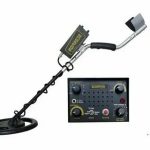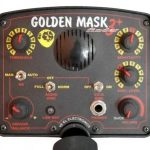Gold Tester: A Buyer’s Guide
When it comes to testing the authenticity of gold, having the right equipment is essential. With so many options available on the market, finding the best gold tester can be a daunting task. To help you make an informed decision, this buyer’s guide will provide you with valuable information on what to look for in a gold tester and the key factors to consider when making your purchase. Whether you are a professional jeweler or simply looking to verify the purity of your gold items, this guide will assist you in finding the perfect gold tester for your needs.
Finding the Best Gold Tester: A Buyer’s Guide is a comprehensive resource for individuals looking to purchase a gold tester. The guide covers important features to consider when choosing a gold tester, such as accuracy, ease of use, and durability. It also provides information on different types of gold testers available in the market, including electronic testers, acid test kits, and X-ray fluorescence (XRF) analyzers. Additionally, the guide offers tips on where to buy a gold tester and what to look for in terms of warranties and customer support. Whether you are a professional jeweler or an amateur enthusiast, this buyer’s guide can help you make an informed decision when purchasing a gold tester.
5 Benefits of Investing in a Gold Tester for Your Business
1. Time-saving: Investing in a gold tester can save your business time by quickly and accurately determining the purity of gold items without the need to send them to a third-party assayer.
2. Cost-effective: Owning a gold tester can help cut costs associated with sending gold items to be assessed by an external party, allowing for more efficient and cost-effective operations.
3. Increased credibility: Having a gold tester on-hand can enhance your business’s credibility by giving customers confidence in the accuracy of your assessments and the quality of your products.
4. Improved customer experience: With a gold tester, you can provide quick and reliable purity evaluations to customers, leading to a better overall experience and increased customer satisfaction.
5. Reduced risk of fraud: A gold tester can help mitigate the risk of fraud by enabling you to verify the authenticity and purity of gold items before making any transactions, ultimately protecting your business from potential losses.
Top 7 Features to Look for in a Quality Gold Tester
1. Accuracy: A quality gold tester should provide highly accurate results with minimal margin of error. Look for a device that can accurately measure the purity of gold within a small range.
2. Ease of Use: The gold tester should be user-friendly and easy to operate, with clear instructions and a simple interface. This ensures that anyone can use it without the need for specialized training.
3. Testing Speed: A good gold tester should provide quick and efficient results, allowing for rapid testing of multiple items in a short amount of time.
4. Durability: Look for a gold tester that is built to last, with a rugged and durable construction that can withstand frequent use in various environments.
5. Testing Methods: Quality gold testers should offer multiple testing methods, such as electronic testing, acid testing, and specific gravity testing, to ensure accurate results across different types of gold items.
6. Calibration: The ability to calibrate the gold tester is essential to maintain accuracy over time. Look for a device that allows for easy and reliable calibration when needed.
7. Portability: For convenience and versatility, consider a gold tester that is lightweight and portable, making it easy to use in different locations such as stores, pawn shops, and jewelry workshops.
The Importance of Regular Calibration for Your Gold Tester
Regular calibration of your gold tester is essential in ensuring accurate and reliable results. Over time, the accuracy of these devices can drift, leading to incorrect readings. By calibrating your gold tester regularly, you can maintain precision and dependability in your testing process. This is especially important for businesses or individuals dealing with significant quantities of gold, as even slight inaccuracies can have significant financial implications. Additionally, regular calibration helps to identify any issues with the device and allows for timely maintenance or repairs, ultimately saving time and money in the long run. Overall, prioritizing the calibration of your gold tester is a critical aspect of maintaining the integrity and accuracy of your gold testing operations.
5 Common Mistakes to Avoid When Using a Gold Tester
1. Not calibrating the gold tester properly: It’s crucial to follow the manufacturer’s instructions for calibrating your gold tester to ensure accurate results. Skipping this step can lead to unreliable readings and potential losses in testing.
2. Using the wrong testing solution: Using an incorrect or expired testing solution can result in inaccurate readings. Make sure to use the appropriate solution for the karat of gold being tested and replace it as needed to maintain accuracy.
3. Not testing in multiple spots on the item: A common mistake is only testing one spot on a piece of gold jewelry or bullion. It’s important to test in multiple places to account for any variations in gold purity.
4. Ignoring external factors: Environmental factors such as temperature, humidity, and other contaminants can affect the accuracy of your gold tester. Be mindful of these factors and try to test in a controlled environment as much as possible.
5. Failing to follow proper safety precautions: Gold testing solutions and acids can be hazardous if not handled properly. Always wear protective gloves and eyewear when using a gold tester and follow proper safety guidelines to avoid any accidents or injuries.
Understanding the Different Testing Methods Used in Gold Testers
Understanding the different testing methods used in gold testers is crucial for accurately determining the purity of gold. Some common testing methods include the use of electronic gold testers, acid testing, X-ray fluorescence (XRF) analyzers, and fire assay testing. Electronic gold testers use conductivity to measure the metal’s purity, while acid testing involves applying acid to the gold and observing the reaction to determine its karat. XRF analyzers use X-ray technology to identify the elemental composition of the gold, providing a non-destructive and precise analysis. Fire assay testing involves melting the gold and analyzing the resulting liquid to determine its purity. Each testing method has its advantages and limitations, and understanding their differences can help in choosing the most appropriate method for the specific testing needs.
The Evolution of Gold Testing Technology and Its Impact on Businesses
The evolution of gold testing technology has seen significant advancements in recent years. Traditional methods of testing gold, such as using chemical testing kits or electronic testers, have been supplemented with more sophisticated technologies like X-ray fluorescence analysis and laser-induced breakdown spectroscopy. These newer methods offer improved accuracy and efficiency in gold testing, enabling businesses to make more informed decisions regarding the quality and value of their gold inventory.
The impact of these advancements on businesses is substantial. With more accurate testing technology, businesses can confidently authenticate and determine the purity of gold, reducing the risk of counterfeit or low-quality gold entering their supply chain. This, in turn, increases consumer trust and enhances the reputation of the business.
Furthermore, the improved efficiency of modern gold testing technology allows businesses to streamline their testing processes, resulting in cost savings and increased productivity. Faster and more accurate testing also enables businesses to make quicker buying and selling decisions, leading to improved inventory turnover and better capital utilization.
Overall, the evolution of gold testing technology has had a significant impact on businesses by enhancing authenticity, efficiency, and decision-making capabilities in the gold industry.
How to Choose the Right Gold Tester for Your Business
When choosing a gold tester for your business, it’s important to consider factors such as the type of gold you will be testing (such as jewelry or coins), the level of accuracy required, and your budget. There are several types of gold testers available, including electronic testers, acid testing kits, and X-ray fluorescence (XRF) analyzers. Electronic testers are convenient and easy to use, but may not be as accurate as more sophisticated options. Acid testing kits are affordable but require some expertise to use effectively. XRF analyzers are highly accurate but come with a higher price tag. Consider your specific needs and conduct thorough research to choose the right gold tester for your business.
The Role of Gold Testers in Ensuring Trust and Transparency in the Gold Industry
Gold testers play a crucial role in ensuring trust and transparency in the gold industry. These devices are used to determine the purity of gold, providing an accurate assessment of its quality. This is essential for buyers and sellers to have confidence in the transactions and to prevent fraud and counterfeit activities in the industry.
By using gold testers, gold dealers and jewelers can verify the authenticity of the gold they are handling, giving assurance to their customers. This helps in building trust and credibility in the market. Additionally, gold testers also help in promoting transparency by providing clear and objective information about the quality of gold being traded.
Overall, the role of gold testers in ensuring trust and transparency in the gold industry is significant and indispensable. These devices serve as a critical tool in maintaining the integrity of the gold market and fostering confidence among consumers and industry professionals.
The Regulatory Landscape for Gold Testing and Its Impact on Businesses
The regulatory landscape for gold testing is complex and varies from country to country. In the United States, the Gold Labeling Act and the Federal Trade Commission’s Guides for the Jewelry, Precious Metals, and Pewter Industries are key regulations that businesses must adhere to. These regulations require accurate labeling and testing of gold products to ensure they meet purity standards.
In Europe, the Responsible Jewellery Council’s Code of Practices and the EU Regulation on Minerals are important regulations governing gold testing. These regulations aim to ensure ethical sourcing and responsible production of gold.
Failure to comply with these regulations can have serious consequences for businesses, including fines, legal action, and damage to their reputation. However, compliance can also provide a competitive advantage by demonstrating a commitment to ethical and high-quality products.
Businesses must invest in reliable gold testing methods and stay informed about changes in regulations to ensure compliance and maintain consumer trust. This can include using X-ray fluorescence (XRF) analyzers, fire assay testing, or third-party certification programs to verify the purity and authenticity of their gold products.
Using a Gold Tester to Safeguard Your Business Against Counterfeit Gold
A gold tester is a crucial tool for businesses in the jewelry and bullion industries to ensure the authenticity of gold products. Counterfeit gold is a significant concern, and using a gold tester can help safeguard against potential losses. These devices use various methods to examine the properties of gold, such as its conductivity or density, to determine its authenticity. By implementing a gold tester in your business operations, you can have more confidence in the products you are buying and selling, ultimately protecting your bottom line and reputation.
In conclusion, finding the best gold tester is crucial for anyone dealing with gold or jewelry. By considering factors such as accuracy, ease of use, and features, buyers can ensure they are getting a reliable and efficient tool for testing gold. Whether you are a professional jeweler or a hobbyist, investing in a high-quality gold tester can save time and money in the long run. Therefore, finding the right gold tester is essential for anyone working with gold.
See also









